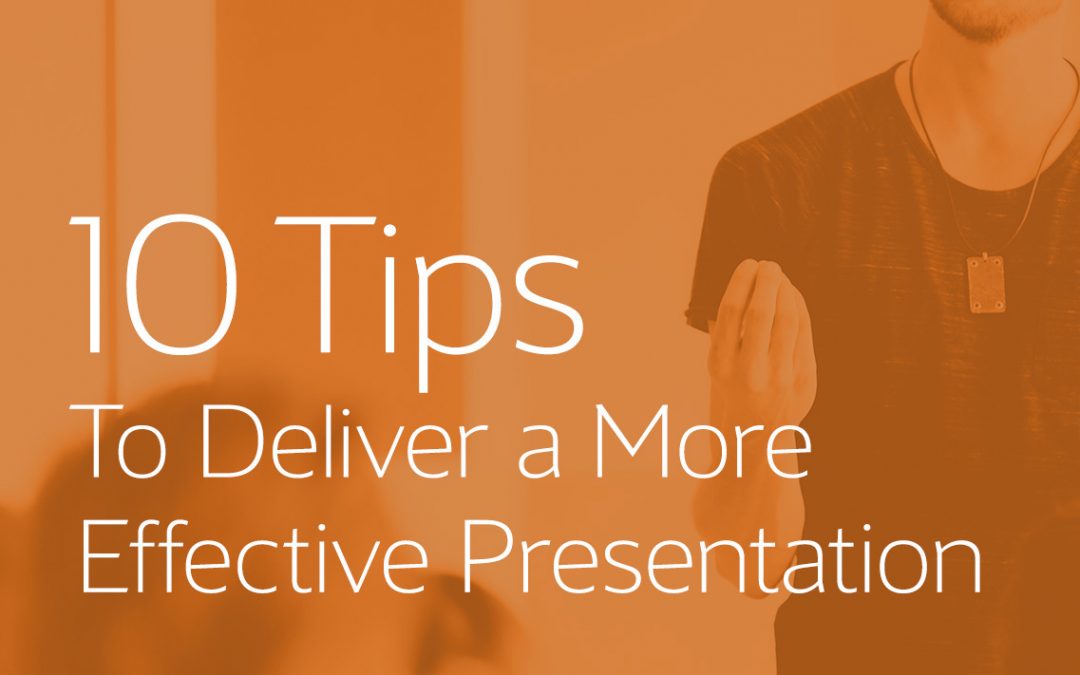You’re standing in front of the mirror and the practice run-through is sounding great. Smiling? Check. Enunciating? Check. Eye contact? Like lasers. But stepping out in front of a crowd is going to be the real challenge. Here are a few checkpoints to make sure you’ll earn that standing ovation.
Mind your manner.
Think about what you’re projecting. The audience needs to see an engaged speaker who is happy to be there and passionate about the content. You’re present, you’re focused, you’re confident. Your energy level is elevated and motivating, not anxious. Crossed arms, hands in pockets, playing with a necklace…all make you seem uneasy and closed-off to your audience. Avoid any preening; it reads as self-conscious behavior.
“Bear with me…”
Avoid negative disclaimers regarding the quality of your presentation. “Forgive me, I had very little time to prepare…” “Speaking in front of crowds isn’t my forte…” These excuses show weakness and a lack of confidence, signaling to the audience that they’re about to be disappointed.
Turn information into stories.
Make it more interesting, more memorable and easier to digest than hearing a list of bullet points. Whether you tell a story that arcs throughout the entire presentation or include anecdotes here and there, don’t lose sight of the material. The story needs to be a vehicle for information, not a distraction from it.
Put yourself in the audience’s shoes.
What topics might be confusing and require further explanation? What parts are dragging and need to be cleaned up? Your mission is to connect with your audience. Who are you talking to? What personal stories will be relatable? What style of humor is appropriate?
What’s your backup plan?
Consider what could go wrong with your presentation and how you will deal with it. Tell a brief anecdote while dealing with a failed projector. Ask a leading question to segue back to a section that was skipped. Whatever it may be, have something in your back pocket.
Make your move.
Don’t pace nervously, but get out from behind the podium and walk around a bit. When gesturing, make it big. Small, conversational gestures mean nothing to an audience; they’re hard to see and aren’t engaging. Instead, use large, confident gestures that root from the shoulder, not the elbow. Use your whole body to bring your story to life; exaggerate your facial expressions and fully commit to the movement.
Take pause.
But don’t fill dead air with false starts or meaningless fillers such as uh, um, like, or so. (It even hurts to type those…get ‘em outta here!) Pace yourself. A nervous presenter speaks very quickly. Vocal inflection and breathing fall by the wayside and you’re left with a rapid mess of a presentation. Add some long pauses and vary the tone and volume of your voice.
Keep your cool.
If your presentation is going badly, try to avoid getting flustered. Laugh about a mistake, shake off a rough start and continue the presentation with a cool head. Your audience will forget the error or not even realize that a mistake was made.
Wrap it up.
Leave time for a Q&A. Take a couple steps towards the audience when there’s a question; you’re creating a bridge where questions feel important and welcomed. Repeat questions to buy yourself time and assure everyone can hear. If nobody pipes up, begin with one of your own: “People often ask me…” Finally, give your audience specifics about how and when to apply what they’ve learned. “Tomorrow, call your team into a meeting…” It’s a good opportunity to summarize your presentation and launch your audience into action.
Take a look at the pros.
Watch seasoned public speakers and take note of how they move, how they engage their audience, how they handle mistakes or interruptions. TED Talks are a great resource with many talented speakers to observe.

